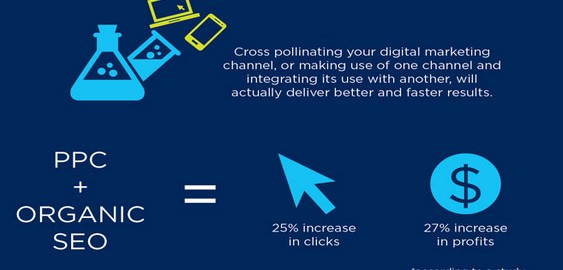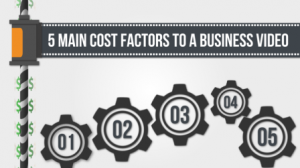Social may be sexy, but search still pays the bills.
As reported below, organic search drives 51% of all visitors to both B2B and and B2C Web sites, while paid-search drives 10% (and social 5%, on average). 89% of customers begin their buying process with a search engine.

How can marketers get the most out of search? The search marketing stats and facts below provide some helpful guidance. Here are four key takeaways from this research:
- Do feed the gorilla. Search doesn’t only mean Google, but the elephant in the room can’t be ignored either. While everyone knows Google is the big dog, the magnitude of its dominance still amazes. Google accounted for nearly 40% of all U.S. digital ad spending last year, while Facebook’s share was about 8%; and Google’s advertising revenue is larger than that of the entire U.S. print industry.
- Be like Avis. As the company’s iconic slogan went, “When you’re number two, you try harder.” Or rather in the case of organic search, you need to try harder. While it’s great to be #1—the top result still generates nearly one-third of all organic search clicks—the share garnered by results two through four has increased significantly in the last decade. No matter the slot though, the key to getting clicks from any rank below #1 is to craft top-notch meta titles and page descriptions.
- Get creative. The top challenges in organic SEO are link building (easy-to-get links no longer have much value) and keyword research (the low-hanging fruit is long gone). To rank well today, use a web presence optimization (WPO) approach in order to earn high-quality links from online publications and industry influencers, and write to “be the best answer” to search queries rather than stuffing content with repetitive phrases.
- Open your wallet. Marketers spend a lot of money online; overall, U.S. marketers will spend more than $ 103 billion on search, display, social media, and email marketing by 2019—but search will remain the largest share of interactive spend (about 44%). And in PPC search ads, 86% of all ad impressions accrue to the top four spots.
For more insights, check out these 21 SEO and search engine marketing stats from top experts including Caroline Nicander Mohr, Laurie Sullivan, Berrie Pelser, Rob Petersen, Melissa Hoffmann, and John A. Lee.
3 General Search and Google Stats and Facts
1. Google estimates that the Internet now contains roughly five million terabytes of data – but the search giant has indexed only 0.04% of it all. (The Wonder of Tech)
2. Integrating PPC and organic SEO efforts results on average in a 25% increase in clicks and a 27% increase in profits over isolated or disconnected efforts. (Digital Marketing Philippines)
3. Google accounted for nearly 40% of all U.S. digital ad spending last year. Facebook’s share was about 8%. (eMarketer)
9 Organic SEO Stats and Facts
4. Lead generation (cited by 61% of corporate marketers) and Web site traffic (57%) are the top SEO objectives for marketers at enterprise companies in 2015. 54% want to improve traffic conversion rates. Just 24% cited attributing sales and revenue to SEO as a top goal. (MediaPost)
5. Organic search drives 51% of all visitors to business-to-business and business-to-consumer Web sites, whereas paid-search drives 10% and social 5%. (MediaPost)
6. Having video on the landing page of your site makes it 53% more likely to show up on page 1 of Google. (41 Stories)
7. A URL’s number of Google +1s is more highly correlated with search rankings than any other factor. (Ber|Art)
8. Ranking near the top of search results is great, but if you want the click, your title and description better be top-notch also. In 2005, searchers spent just under 2 seconds, on average, viewing each listing; in 2014 that has dropped to 1.17 seconds. (MarketingProfs)
9. The top organic result still captures about the same amount of click activity (32.8%) as it did in 2005. However, organic results that are positioned in the 2nd through 4th slots now receive a significantly higher share of clicks than in 2005–63% vs. 48%. (MarketingProfs)
10. 89% of customers begin their buying process with a search engine. (Biznology)
11. 72% of marketers from enterprises rate search engine optimization (SEO) as successful in achieving marketing objectives like lead generation and increased Web traffic. (MediaPost)
12. The top challenges in SEO are link building (cited by 41% of corporate marketers) and keyword research (39%). (MediaPost)
9 Search Engine Marketing (SEM) Facts and Statistics
13. Google’s advertising revenue is larger than that of the entire U.S. print industry. (The Wonder of Tech)
14. 30% of companies outsource their paid search advertising, and 28% do so for display advertising. (MediaPost)
15. Total internet advertising spending is growing 16% per year. Mobile accounts for 11% of the total. (TechCrunch)
16. 61% of CMOs say search engines are an effective marketing channel. (AdWeek)
17. Nearly half of digital marketing budgets are spent on search, with 31% on paid search and 18% on SEO. (MarketingProfs)
18. In PPC search ads, 86% of all ad impressions accrue to the top four spots. (ClickZ)
19. Overall, U.S. marketers will spend more than $ 103 billion on search, display, social media, and email marketing by 2019 — growing at a 12% compound annual growth rate (CAGR) — but search will remain the largest share of interactive spend. (MediaPost)
20. U.S. spending on search marketing will reach $ 31.6 billion in 2015. (MediaPost)
21. U.S. spending on paid search and organic optimization will top $ 45 billion by 2019. (MediaPost)
(246)
Report Post




